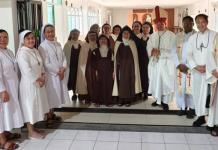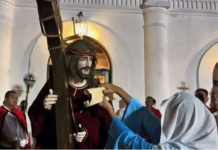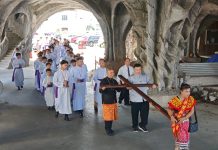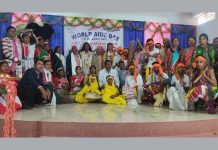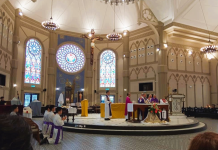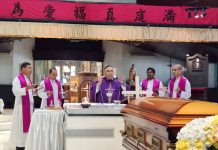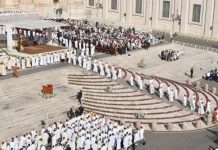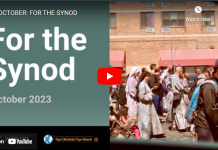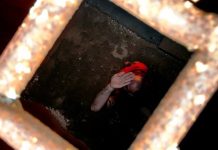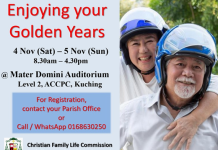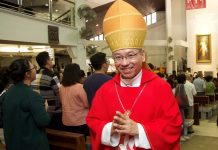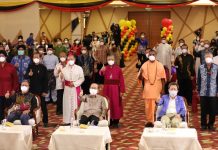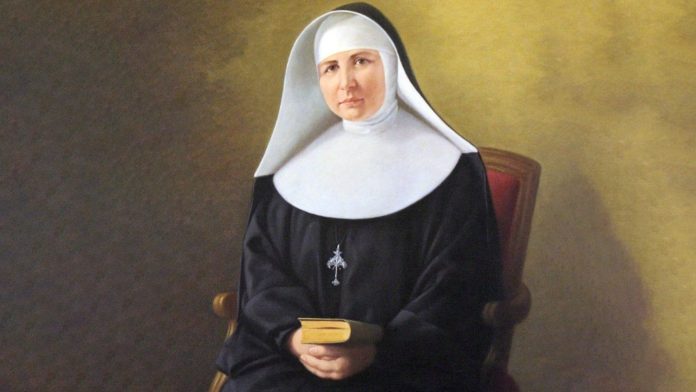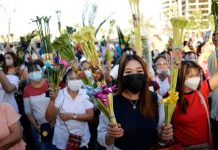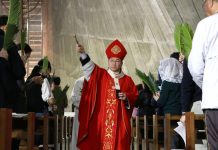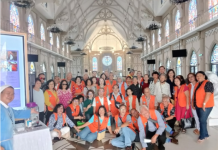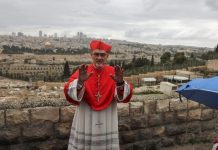Pope Francis approves decrees to promote 3 religious women, 2 laywomen, and 1 Salesian missionary priest along the path toward sainthood.
By Tiziana Campisi
VATICAN CITY — Cardinal Marcello Semeraro, Prefect of the Dicastery for the Causes of Saints, met Thursday with Pope Francis, who approved decrees related to 6 new Venerables.
With the decrees, the Pope recognized the heroic virtues of a priest, 3 women religious, and 2 laywomen.
The new Servants of God are: Fr. Carlo Crespi Croci, an Italian-born Salesian missionary in Ecuador; Mother Mary Catherine Flanagan, an British-born Brigidine sister; Sr. Leonilde di San Giovanni Battista, an Italian-born religious of the Congregation of the Missionary Sisters of the Sacred Hearts of Jesus and Mary; Sr. María do Monte Pereira, a Portuguese-born religious of the Hospitaller Sisters of the Sacred Heart of Jesus; Teresa Enríquez de Alvaredo, a Spanish-born laywoman and mother of four; and, Maria Domenica Lazzeri, an Italian-born laywoman and stigmatist.
A generous and caring mother
Teresa Enríquez de Alvaredo, who lived in Spain between the 15th and 16th centuries, was brought up as a child in a household full of faith.
A lady-in-waiting to Isabella of Castile, she married a minister of the sovereign at her family’s request. She became the mother of four children, but was widowed in 1503. Her steadfast faith and love for Jesus in the Eucharist led her to detach herself from the glamour of the Spanish court to devote herself to prayer and charitable activities. She retired to Torrijos, near Toledo, where she led a life of austerity and worked on behalf of the poor and marginalized.
She acted as a mother and educator for boys left orphaned due to plague and famine, cared for street girls and women, took care of the sick, and worked to revive the worship of the Blessed Sacrament. She also managed her family’s wealth intelligently and prudently, allocating it mostly to works of charity and the construction of places of worship. She also used it to help establish several confraternities, a monastery and four convents. She died on 4 March 1529, and in recent times her example has been re-evoked at Eucharistic Congresses.

Don Bosco’s spirituality among the people of Ecuador
Salesian priest Fr. Carlo Crespi Croci, born in Legnano, Italy, in 1891, became a missionary in Ecuador. After his studies and priestly ordination, he left for Cuenca in 1923, where for 59 years he carried out initiatives to promote evangelization, formation, and human and Christian values.
Fr. Carlo became well known both for his qualities as an evangelizer – combined with a genuine Christian witness – and for his reputation as a scientist, especially in the fields of botany and archaeology.
The cornerstones of his spiritual and missionary life were the Eucharist and Mary Help of Christians. He modeled his life after St. John Bosco, whom he tried to imitate by spreading the faith especially among young people. In the later years of his life, Fr. Carlo devoted himself to the ministry of confessions, going so far as to spend as much as 17-hours-a-day in the confessional. He passed away at the age of 90.

A religious in dialogue with Lutherans
Mother Mary Catherine Flanagan was born in London in the late 1800s, and became a religious of the Order of the Most Holy Savior of St. Brigid.
At the age of 19, she moved to Rome, where St. Maria Elisabeth Hesselblad – proclaimed a saint by Pope Francis in 2016 – had reconstituted the Order of St. Bridget. Having taken her vows of religion, she was sent to various houses.
In Sweden, she devoted herself mainly to relations with Lutherans, forging fruitful friendships. In England, she organized a hospitality center, and managed to fit into a difficult environment thanks to her generous and helpful manner.
An energetic and jovial woman, she was animated by great fervor and always ready for charity toward the suffering and needy. She was diagnosed with cancer in 1935, and died six years later in Stockholm amid excruciating pain, though she edified all around her by her example of patience.

A life spent in teaching and for the poor
Sr. Leonilde of San Giovanni Battista, born as Amelia Rossi in Lisignago in the Italian province of Trent, was still in her teens when she began her novitiate in the Congregation of the Sacred Hearts of Jesus and Mary in Pula in 1906. A woman of great faith, she sought union with God through prayer, always eager to faithfully fulfill God’s will.
Throughout her life, she experienced the hardships of her Congregation’s journey and numerous physical sufferings, but she always trusted in the Lord and endured trials with patience while preserving inner peace.
Her generosity distinguished her in the field of education, so much so that she became a point of reference for both students and their families, but the poor and people in difficulty, spiritual and material, also benefited from her assistance and support. During World War II, she also deprived herself of necessities in order to donate them to the needy. She died on 12 December 1945.
Signs of the stigmata in a young peasant girl
Maria Domenica Lazzeri, born in the Italian province of Trent, was a laywoman who lived in Capriana in the 1800s. Her family of birth was very religious and taught her the truths of the faith and the labours of the mill and the fields.
As a child, she gave herself to assist the poor and suffering, and cared with her mother for those who fell ill from a serious and infectious epidemic, also contracting the disease herself. She began to suffer from loss of appetite, experienced difficulty breathing, and suffered a fever and tremors, to the point of convulsions. Her condition was then diagnosed as severe anorexia.
In January 1835, she received the stigmata on her hands, feet and in the right side of her ribcage. A month later she received the sign of the crown of thorns on her head, which dripped blood on every Friday. She made her experience of such extraordinary phenomena into an opportunity for prayer and self-offering. She bore the stigmata painfully and by keeping out of the public visibility. She felt a special belonging to the Lord and His Cross and bore witness to His love. She died on 4 April 1848, at the age of 33.

Among the sick of Madeira
María do Monte Pereira, a Portuguese laywoman from the island of Madeira who lived between the 19th and 20th centuries, entered the Congregation of the Hospitaller Sisters of the Sacred Heart of Jesus to devote herself to the sick.
She carried out her service and apostolate in several communities, where she was esteemed by her religious sisters and experienced a unique spiritual phenomena which she hid from others and lived in humility.
At the urging of her spiritual director, she wrote down her inner experiences. A woman of great moral strength, she was characterized by a remarkable capacity for self-control which stemmed from her extraordinary intimacy with God. With the help of God’s grace, she was able to face difficult situations brought about by her precarious health condition. She passed away at the age of 66 on 18 December 1963.


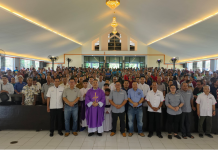
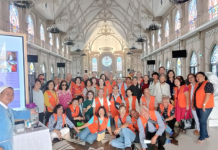
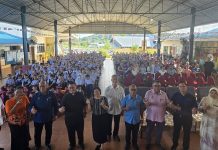
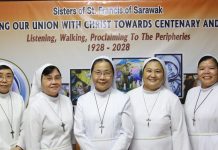
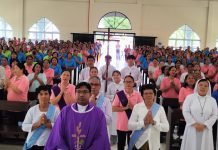
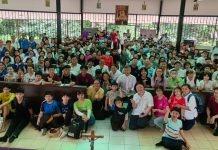

、尤金·玛格拉桑神父(Fr-Eugene-Maglasang)(前排右八)及叶祥胜神父(前排右十)于2025年1月25日在圣体堂合影。(摄影:蔡彼得).jpg)
